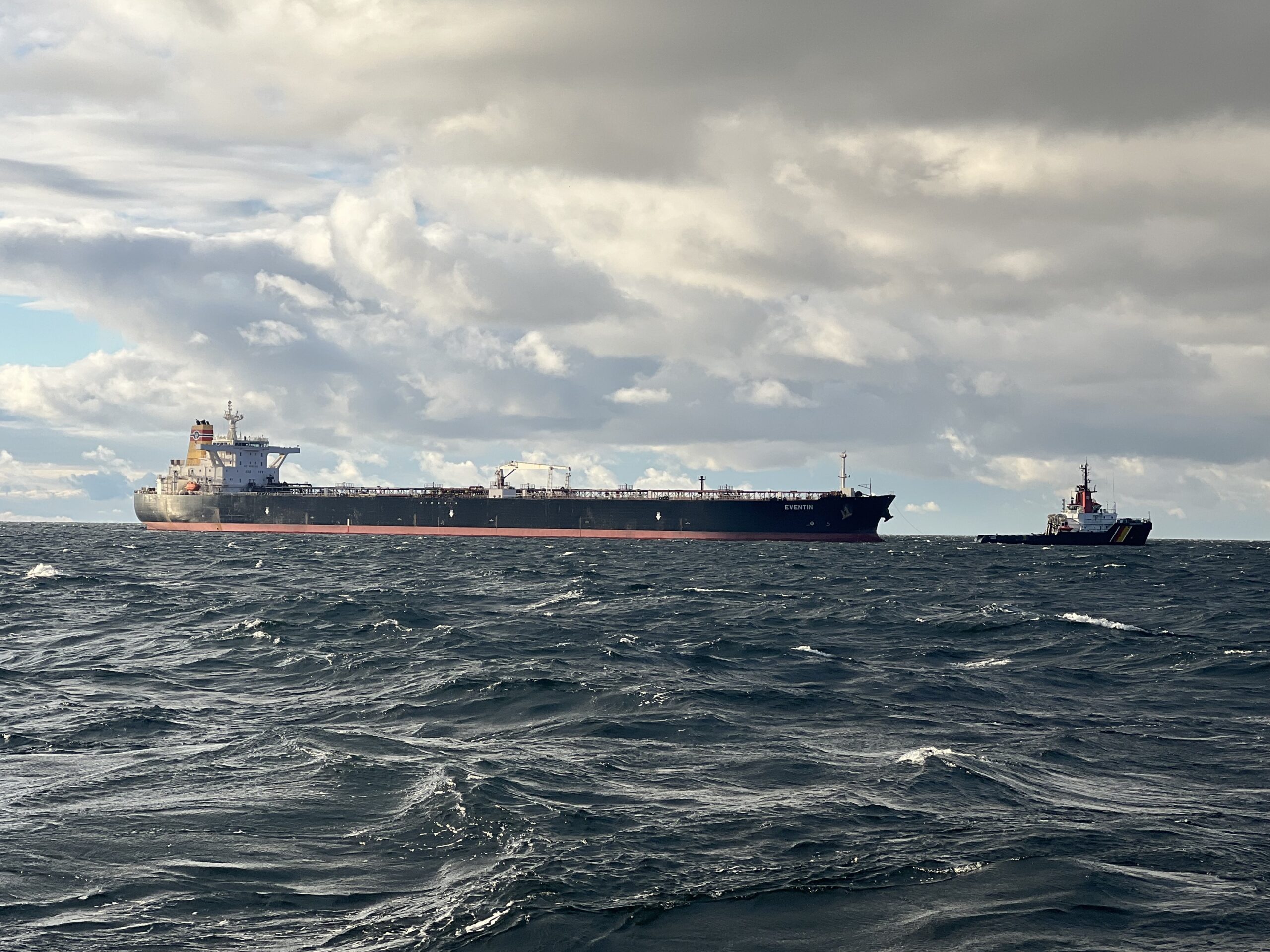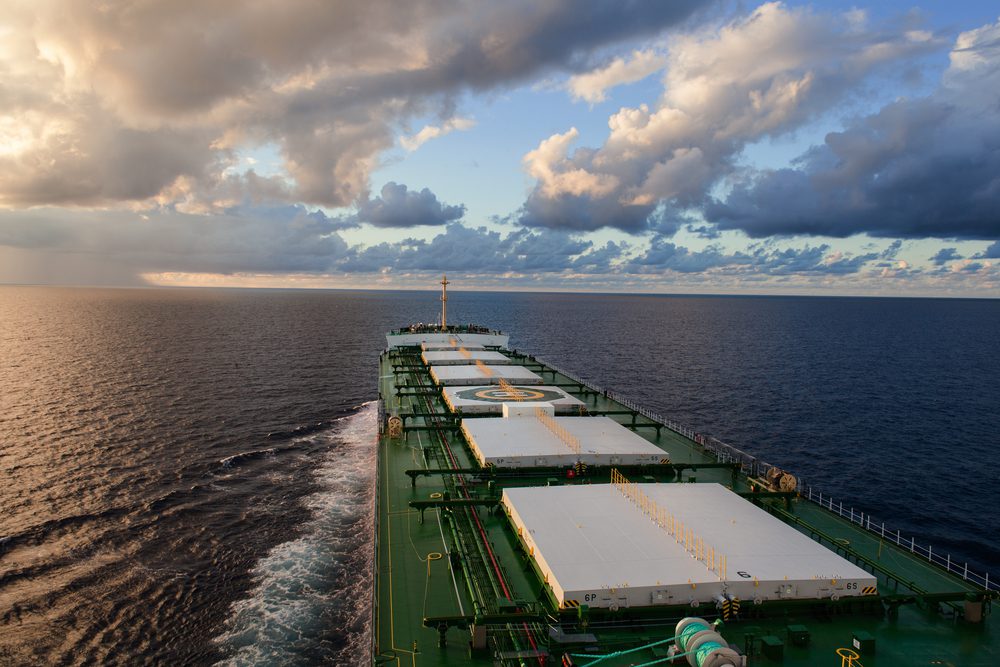By Brendan Murray (Bloomberg) —
Global supply strains that started to ease in early 2022 are worsening again as headwinds strengthen from the war in Ukraine and China’s Covid lockdowns, threatening slower growth and faster inflation across the global economy.
After the pandemic hit Asia-U.S. trade routes the hardest over the past two years, the latest turmoil is being acutely felt in Germany, which is heavily reliant on Russian energy and suppliers across Eastern Europe. Business expectations in the region’s biggest economy during March posted the steepest one-month drop on record, factories across the continent face diesel and parts shortages, and delays moving cargo through key North Sea gateways such as Bremerhaven are lengthening.
“We thought Russia was just a resources story that was going to push energy prices up — that it would make supply chains more expensive but it wouldn’t disrupt them,” said Vincent Stamer, a trade economist with Germany’s Kiel Institute for the World Economy. “It appears a little more threatening than we initially anticipated.”
On top of the wartime setbacks, omicron outbreaks are widening China’s use of strict lockdowns in major trade hubs, the latest in Shanghai. A.P. Moller-Maersk A/S, the world’s No. 2 container carrier, said Monday that some depots serving local ports have closed indefinitely, and trucking to and from terminals will be “severely impacted.”
Chinese exports were already tailing off from an October peak — a trend that might continue for the next few months if Beijing maintains the hard line on fighting the virus, Stamer said. That’ll add shipping delays, sourcing problems and costs for businesses from the U.S. to Europe.
According to supply constraint indexes developed by Bloomberg Economics, pressures in the U.S. and Europe intensified in February after several months of improvement. Anecdotal evidence through March suggests the strains won’t abate.
Stamer cited the example of electric wire assemblies made in Ukraine for German automakers. “These cable trees are actually custom-made for individual cars” and aren’t easily or cheaply sourced from other countries, he said. Another rare input that’s suddenly even more scarce is neon gas used in semiconductor production. Ukraine produces 50% of the world’s purified neon, Stamer said. Russia’s output of raw materials extends even deeper into the global economy.
More than 2,100 U.S. firms and 1,200 in Europe have at least one direct supplier in Russia, and the total reaches 300,000 when indirect suppliers are included, according to Arlington, Virginia-based Interos, a supply-chain risk management company.
“Multiple industries are reliant on the same raw materials and a large percentage of them are coming out of Russia,” Interos CEO Jennifer Bisceglie said. “You’re seeing a massive cascading effect on an already limping system of the global supply chain.”
The economic and political stakes are far more consequential than the developed world’s biggest worry in 2021 — the concern that slammed global logistics would spoil Christmas for retailers and consumers.
Fears are now rising about food shortages. The cost of living is rising in rich and poor regions alike. Soaring energy prices are spawning street protests from Albania to the U.K.
Costly, longer-term shifts are accelerating, too: Goldman Sachs economists say the new geopolitical risks are forcing companies to reinforce their operations against global disruptions through reshoring, diversification and overstocking inventories.
“At the moment, the storm clouds on the horizon look quite menacing,” Citigroup Global Chief Economist Nathan Sheets said in a research note on Friday, explaining why “a major adverse supply shock” from the Russia-Ukraine conflict led the bank to cut its outlook for world GDP growth this year and increase its inflation projections. “Bottom line, an already complicated picture has become even more complex.”
Trade is already feeling the sting of sanctions on Moscow and blocked transport routes. According to FourKites Inc., a supply-chain visibility platform, Russian imports across all modes of freight transportation dropped 62% over the first month of the conflict, while shipments into Ukraine plunged 97%.
Though Russia accounts for 5% of the world’s seaborne trade and Ukraine just 1%, a heightened risk of a global economic slowdown has emerged.
Economists at Barclays on Monday said the world is entering a new era of higher volatility for growth and inflation. Allianz Research on Friday warned of a greater risk of a “double whammy” in world trade — lower volumes and higher prices — in 2022. Clarksons Research, a shipping analytics firm in London, last week trimmed its projections for global trade this year and next, saying its port congestion indexes are rising again and the latest shocks are “amplifying an already disrupted maritime transport system.”
According to data compiled by Bloomberg, the German ports of Hamburg and Bremerhaven saw new highs in ship congestion this month, while Rotterdam, the continent’s busiest gateway for container traffic, saw its vessel backup at the start of the month reach an 11-month high.
The snarls make any return to normal unlikely this year unless demand unexpectedly craters. Ocean shipping, the workhorse for some 80% of global trade, was stretched so thin that the spot rate to send a 40-foot container of goods to the U.S. from Asia averaged more than $10,000 in the second half of last year — about seven times higher than the pre-pandemic level. Those rates have come down in recent weeks, but experts say the reprieve probably reflects a seasonal lull before transport demand and costs pick up again.
“It’s going to get worse as we move through the second half of this year and into peak season,” Mark Manduca, the chief investment officer of GXO Logistics, told Bloomberg Television on Friday. “You don’t initially feel the pinch in the first few weeks of a supply-chain shortage — people have inventories.”
Even greater than the risks Russia’s war in Ukraine pose to global supply fluidity are the Covid-19 cases and targeted lockdowns in China, according to economists Ana Boata and Françoise Huang at Euler Hermes, a unit of Allianz Group. They see a risk that container freight prices approach or even exceed their previous peaks, before returning to current levels by year end.
“Overall, even if not returning to the peaks of 2021, the cost and congestion levels of global supply-chains are likely to remain high for most of 2022,” Boata and Huang wrote in an email. “The normalization may start more visibly only from 2023.”
Trying to anticipate how two years of supply constraints affect consumer prices has already challenged central bankers, with Federal Reserve Chair Jerome Powell saying at a press conference earlier this month that Russia’s isolation from the world economy is “going to mean more tangled supply chains, so that could actually push out the relief we were expecting.”
Some of that relief was reflected in the New York Fed’s Global Supply Chain Pressure Index, a gauge launched in January that most recently showed some easing from peak strains late last year. While it’s too soon for the New York Fed to quantify any wartime effects, there are signs that the index’s recent improvement will be limited.
“There’s been a decrease in the pressure, but the level of the pressure is still very high. It’s an improvement but it doesn’t mean the problems are resolved,” New York Fed economist Gianluca Benigno said about the direction of the index in its latest update in early March. “Anecdotal evidence suggests there might be further pressure ahead.”
–With assistance from Enda Curran, Kevin Varley, Malcolm Scott and Bjorn Van Roye.
© 2022 Bloomberg L.P.

 Join The Club
Join The Club










